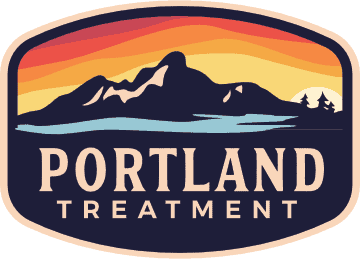Self-harm and addiction often appear together, not because a person “wants attention,” but because both behaviors temporarily soothe emotional pain that feels unmanageable.
At Portland Treatment in Biddeford, Maine, we help clients understand why self-injury and substance use frequently go hand-in-hand, and how to break the cycle with compassionate, evidence-based care.
Why Self-Harm and Addiction Often Overlap
Self-harm is not always a separate mental health issue. For many, it becomes another form of coping in the same way substances do.
Shared root causes include:
- Trauma or childhood adversity
- Emotional numbness or dissociation
- Intense shame or self-directed anger
- Depression, anxiety, or personality disorders
- Lack of healthy coping skills
- Unresolved grief
- Nervous system dysregulation
Both addiction and self-harm can temporarily relieve tension or emotional overload. But afterward, they often create more pain, secrecy, and guilt, fueling an ongoing cycle.
How Addiction Can Increase the Risk of Self-Harm
When someone is actively using drugs or alcohol, the brain’s ability to regulate emotion decreases. This makes overwhelming feelings more intense, and self-injury may begin or worsen.
Substance use can:
- Lower inhibitions
- Increase impulsivity
- Intensify depression or hopelessness
- Worsen trauma symptoms
- Disrupt sleep and emotional stability
- Trigger guilt or shame that leads to self-harm
Many clients tell us they self-harmed more often when intoxicated or during withdrawal, when emotions felt too big to handle.
Why Self-Harm Doesn’t Always Mean Suicidal Intent
Most people who self-harm are not trying to end their life, they’re trying to feel something, or stop feeling something, or release overwhelming tension. However, self-injury increases suicide risk over time, especially when paired with substance use.
That’s why it’s essential to treat both issues together—not separately.
How Portland Treatment Supports Clients Struggling With Both
We approach self-harm in the context of addiction recovery with non-judgment, safety, and deep emotional understanding. Treatment is individualized but often includes:
DBT is the gold standard for reducing both substance use and self-injury. It teaches:
- Emotional regulation
- Distress tolerance skills
- Mindful coping techniques
- Replacement behaviors for urges
CBT helps clients identify harmful thought patterns (“I deserve this,” “I can’t handle this pain”) and replace them with healthier internal dialogue.
Trauma-Informed Care
Since trauma fuels both addiction and self-harm, our clinicians use:
- EMDR
- Somatic grounding techniques
- Trauma processing in a safe, paced environment
For clients with co-occurring mood disorders, our psychiatric team supports symptom stabilization and monitors progress closely.
Relapse & Urge Management Plans
Clients learn how to anticipate triggers, build emotional safety plans, and decrease shame around slip-ups.
The Cycle of Shame: Why It Must Be Broken to Heal
Shame is one of the strongest common threads between addiction and self-harm.
It says:
- “I’m broken.”
- “I deserved to be hurt.”
- “I can’t ask for help.”
These beliefs block recovery.
At Portland Treatment, we help clients replace shame with self-compassion, accountability, and connection, three core ingredients of long-term recovery.
What Recovery from Self-Harm and Addiction Looks Like
When both addiction and self-injury are treated together, clients begin to:
- Experience emotions without being overwhelmed
- Develop healthy coping tools
- Regulate mood and stress
- Strengthen relationships
- Reduce urges for both substances and self-harm
- Build a sense of worth and identity
Healing won’t be perfect, but it’s absolutely possible.
When to Seek Help for Self-Harm and Addiction
You or someone you love may benefit from professional support if you notice:
- Self-harm during or after substance use
- Cutting, burning, or hitting oneself
- Increasing urges during stress or withdrawal
- Hiding scars or injuries
- Using substances to numb emotional or physical pain
- Feeling hopeless, empty, or out of control
If there is immediate risk of self-harm or suicidal crisis, call 988 or text HOME to 741741 for 24/7 confidential support.
FAQ
Why do addiction and self-harm often happen together?
Because both behaviors momentarily reduce emotional pain, tension, or numbness caused by trauma or mental health disorders.
Is self-harm always a suicide attempt?
No. Most self-harm is not suicidal, but it does increase long-term risk. Combined with substance use, safety becomes even more important.
Can self-harm stop once I’m sober?
Sometimes—but often the urge remains because the emotional root causes still need healing. Therapy helps address those underlying patterns.
What is the best treatment for self-harm and addiction?
A combination of DBT, CBT, trauma therapy, and structured addiction treatment is shown to be highly effective.
How does Portland Treatment address self-harm in addiction recovery?
We provide trauma-informed therapy, DBT skills, psychiatric support, and personalized safety plans that reduce urges and build long-term emotional stability.
Sources
National Alliance on Mental Illness. (n.d.). Self-harm. Retrieved from https://www.nami.org/about-mental-illness/common-with-mental-illness/self-harm/ NAMI
Andover, M. S., & Morris, B. W. (2014). Nonsuicidal self-injury: What we know, and what we need to know. Retrieved from https://www.ncbi.nlm.nih.gov/pmc/articles/PMC4244874/ PMC
The Crisis Text Line. (n.d.). Self-Harm. Retrieved from https://www.crisistextline.org/topics/self-harm/ crisistextline.org

